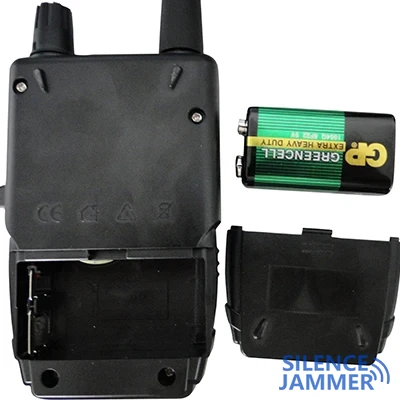With the rapid development of drone technology, drones are increasingly used in various fields. However, the widespread use of drones has also brought about some security and privacy issues, such as drone intrusion into sensitive areas, illegal filming, and potential terrorist activities. In order to deal with these threats, drone signal jamming guns came into being. This article will introduce in detail the working principle of the UAV signal jamming gun and its application scenarios.

How the drone signal jamming gun works
- The UAV gun signal jammer: is a device specially designed to interfere with and block UAV control signals. Its basic principle is to emit high-power radio signals to cover the communication frequency band between the drone and its controller, thus cutting off the connection between the drone and the ground controller and causing the drone to lose control.
- Principle of signal interference: UAVs usually communicate with ground controllers through GPS, Wi-Fi or other wireless communication protocols. The jamming gun covers these communication frequency bands by generating powerful interference signals, making it impossible for the drone to receive effective control signals or navigation signals. Specifically, the jamming gun will emit radio waves with the same or similar frequency as the drone's control signal, interfering with the drone's receiving equipment so that it cannot receive the original control signal.
- Interference frequency band: UAV signal jamming guns usually target common UAV communication frequency bands, such as 2.4GHz and 5.8GHz (Wi-Fi signal), 1.5GHz (GPS signal), etc. By covering these frequency bands, drone communication and positioning can be effectively blocked.
- Mechanism of action: When the interference signal is strong enough, the drone will enter an out-of-control state. Most commercial drones will initiate preset safety measures after losing control signals, such as returning to the take-off point, landing on the spot, or floating to wait for reconnection.
Application scenarios of UAV signal jamming gun
The application scenarios of drone signal jamming guns are mainly concentrated in scenarios where sensitive areas need to be protected and drone threats need to be prevented. The following are some typical applications:
- Airports: Drones flying near airports can pose a serious threat to flight safety. Jammer guns can be used to drive away drones that mistakenly enter no-fly zones to ensure normal takeoff and landing of aircraft.
- Government and Military Facilities: Government agencies and military bases often prohibit drone access to prevent intelligence leaks and security threats. Jammer guns can effectively prohibit drone activities in these areas and protect confidential information and important facilities.
- Large public events: At large public events such as sports events and concerts, drones may threaten public safety. Jammer guns can be used to drive away illegally flying drones and ensure the smooth progress of activities.
- Private and commercial protection: Some private and commercial areas, such as large corporate campuses, luxury residences, etc., may also use jamming guns to protect privacy and prevent drone intrusion.
- Law Enforcement Operations: Police officers may need to use jamming guns while on duty to deter criminals from using drones for illegal activities, such as transporting contraband or monitoring police operations.
Precautions for use
Although UAV signal jamming guns play an important role in many occasions, their use also needs to comply with relevant laws and regulations. Different countries and regions have strict regulations on the use of radio frequency bands, and the use of interference equipment may require permission from relevant departments. In addition, improper use of jamming guns may cause interference to legitimate wireless communications and affect the normal life and work of others.
As an efficient anti-drone technical tool, the drone signal jamming gun plays an important role in ensuring security and protecting privacy. By understanding how it works and where it can be used, we can better leverage this technology to address the challenges posed by drones. At the same time, only the reasonable and legal use of interference guns can ensure maximum effectiveness and avoid unnecessary trouble.


